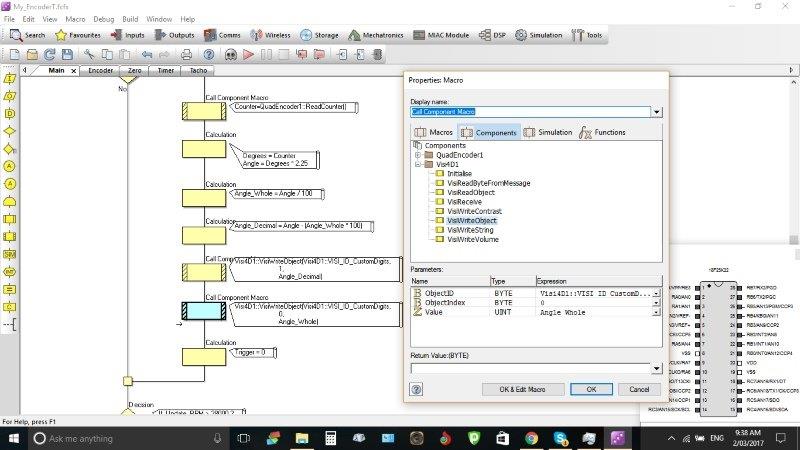Even that i have done a lot of programming for the algorithm it will still be a pain in the *** to controll the machine. But there are several way's to go to Rome  Mayby ill try it with Arduino, sounds silly but Arduino is a good stable C platform witch is easy to program. The thing is i dont need to use all axis at once, there threatet all separately at first stage. When i want to go for other things like rounded facets i should use 2 axis at once but this schould also be no problem becourse you work with triangles. Even more fun is to use the sines/cosines then you can calculate both at once. When you use encoders like what i want to do is that you let the machine run on the encoders. (Only possible if you run not tooooo fast).
Mayby ill try it with Arduino, sounds silly but Arduino is a good stable C platform witch is easy to program. The thing is i dont need to use all axis at once, there threatet all separately at first stage. When i want to go for other things like rounded facets i should use 2 axis at once but this schould also be no problem becourse you work with triangles. Even more fun is to use the sines/cosines then you can calculate both at once. When you use encoders like what i want to do is that you let the machine run on the encoders. (Only possible if you run not tooooo fast).
But... I use 2 sensors directly under the bearings for testing sound if the stone toutches the lap, i can make a measurement if i'm actualy cutting or not. I hope this works by the way lol. Not tested yet. Thus there are more aspects to look at.
lol. Not tested yet. Thus there are more aspects to look at.
Buyed today some more linear rails today, could buy a lot from somebody i know, hopefully there is some usefull guides for my stone cutter. Also i need to build that one myself. My dad buyed one for 1200 euro's a long time ago and he uses the machine now for everything you shouldnt do on one lol. I can build one under that price. Second hand is a problem here in the Netherlands becourse there are so little people that uses one here... and a new one costs a lot of $$$.
lol. I can build one under that price. Second hand is a problem here in the Netherlands becourse there are so little people that uses one here... and a new one costs a lot of $$$.
Greets Christian
BTW i added a aluminium extrusion to it but i think i need to use a another linear rail for the mounding, i can better use slot 10 for the mounting and use 4 guide cars to hold the weight. Why one guide car? Becourse these cars may have 2000kg of force on it. So one car is inaf but if 2 needed ill add two The 4 guide cars are for under the aluminium profile for the X axis. The extrusion is 90x90mm.
The 4 guide cars are for under the aluminium profile for the X axis. The extrusion is 90x90mm.

Also still have litle problems to add my ballscrew mayby i need to search for another one.
But... I use 2 sensors directly under the bearings for testing sound if the stone toutches the lap, i can make a measurement if i'm actualy cutting or not. I hope this works by the way
Buyed today some more linear rails today, could buy a lot from somebody i know, hopefully there is some usefull guides for my stone cutter. Also i need to build that one myself. My dad buyed one for 1200 euro's a long time ago and he uses the machine now for everything you shouldnt do on one
Greets Christian
BTW i added a aluminium extrusion to it but i think i need to use a another linear rail for the mounding, i can better use slot 10 for the mounting and use 4 guide cars to hold the weight. Why one guide car? Becourse these cars may have 2000kg of force on it. So one car is inaf but if 2 needed ill add two

Also still have litle problems to add my ballscrew mayby i need to search for another one.





